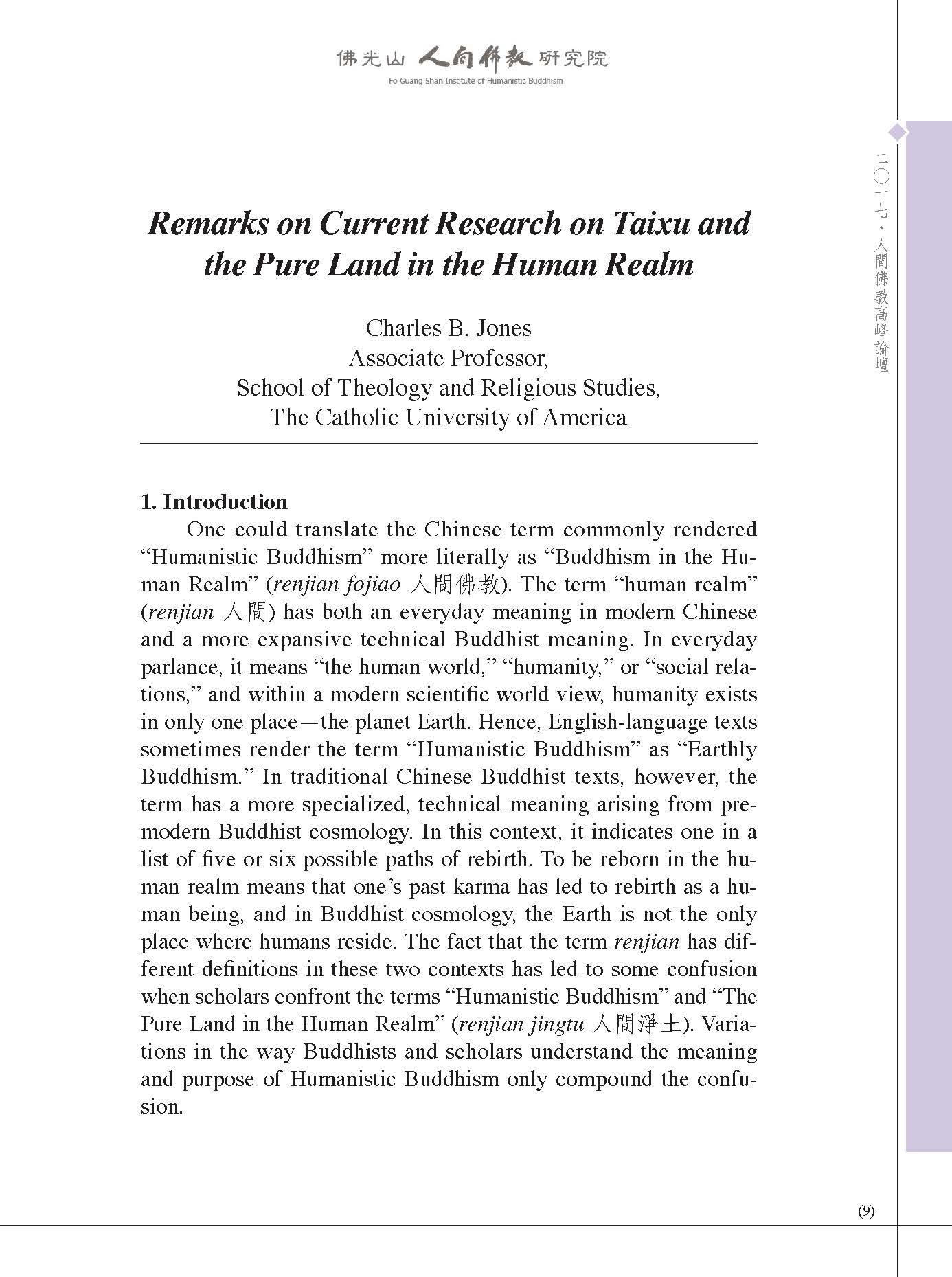
|
Remarks on Current Research on Taixu and the Pure Land in the Human Realm
作者
Charles B. Jones
單位職稱
Associate Professor, School of Theology and Religious Studies, The Catholic University of America
其他名稱
太虛與人間淨土最新研究之評述
編者
程恭讓、妙凡法師總編輯
摘要
One could translate the Chinese term commonly rendered “Humanistic Buddhism” more literally as “Buddhism in the Human Realm” (renjian fojiao 人間佛教). The term “human realm” (renjian 人間) has both an everyday meaning in modern Chinese and a more expansive technical Buddhist meaning. In everyday parlance, it means “the human world,” “humanity,” or “social relations,” and within a modern scientific world view, humanity exists in only one place—the planet Earth. Hence, English-language texts sometimes render the term “Humanistic Buddhism” as “Earthly Buddhism.” In traditional Chinese Buddhist texts, however, the term has a more specialized, technical meaning arising from premodern Buddhist cosmology. In this context, it indicates one in a list of five or six possible paths of rebirth. To be reborn in the human realm means that one’s past karma has led to rebirth as a human being, and in Buddhist cosmology, the Earth is not the only place where humans reside. The fact that the term renjian has different definitions in these two contexts has led to some confusion when scholars confront the terms “Humanistic Buddhism” and “The Pure Land in the Human Realm” (renjian jingtu 人間淨土). Variations in the way Buddhists and scholars understand the meaning and purpose of Humanistic Buddhism only compound the confusion.
引文
Charles B. Jones, " Remarks on Current Research on Taixu and the Pure Land in the Human Realm, " 2017人間佛教高峰論壇──人間佛教的社會向度 (2018): 9-20
全文下載











